Meet Scott Metzner, the Developer Who’s Transforming Industrial West Harlem
By Rebecca Baird-Remba April 19, 2017 9:30 am
reprints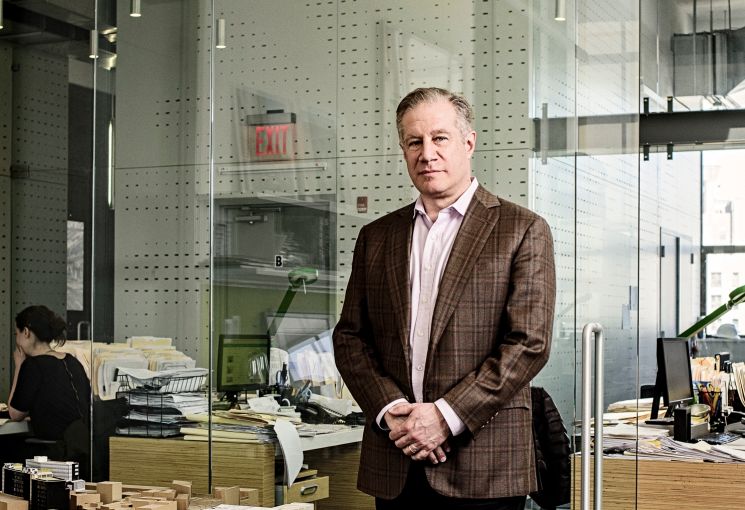
When Scott Metzner arrived in industrial West Harlem 27 years ago, entire blocks were abandoned.
“What was scariest about these areas was that you had hundreds and hundreds of feet, you had entire blocks that had no one living there, no one working there, multiple drug gangs,” the now 57-year-old said. “People who did live around here would purposely avoid walking down a street like this particular street, because once you were in it, you were subject to whatever was going on here.”
He ended up on West 126th Street near Amsterdam Avenue because the Department of Housing Preservation and Development (HPD) had selected him to develop a pair of small, vacant buildings into affordable housing. He noticed a mammoth, abandoned redbrick factory on the corner and wondered what the building could be if he owned it. Seven years later, in 1997, he purchased the neglected six-story property at 1361 Amsterdam Avenue—a piece of the former Yuengling Brewery complex that became a fur storage warehouse in the 1940s—and dubbed it the Mink Building.
Now Metzner and his business partner at Janus Property Company, Jerry Salama, own three blocks’ worth of factories and warehouses along Amsterdam Avenue between West 125th and West 128th Streets. With their development, the Manhattanville Factory District, they hope to transform the sleepy industrial neighborhood into a mix of offices, retail and social services. They’re preserving, and in some cases expanding, the 1910s industrial buildings as they convert them to a variety of commercial and community spaces.
“We’re trying to create a dynamic and interesting community,” Metzner explained. “Not a suburban community, not a separate community, but something that feels authentic to West Harlem. Something that brings bodies to a block that was vacant for a hundred years. By bringing new services to this community, that these tenants go to, this opens up new services for people who live here, and that opens up new job opportunities and new economic development opportunities.”
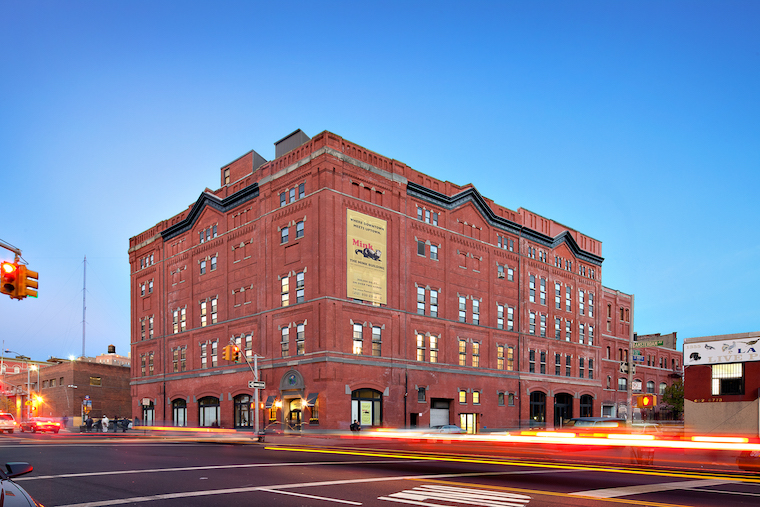
Plenty of New York City developers pay lip service to the concepts of community investment, historic preservation, job creation, active ground floors and affordable space for small local businesses. Metzner is one of the few developers in a gentrifying neighborhood who is trying to walk the walk when it comes to making those progressive urban planning concepts a reality.
“Scott Metzner is a visionary in a business where landlords are just looking for a way to make another few bucks on rent,” said Councilman Mark Levine, whose district includes West Harlem. “He’s been incredibly thoughtful about making an incubator for small businesses that’s helped encourage innovation in that area and helped create an identity in the part of the neighborhood that was mostly known for abandonment.”
Metzner’s introduction to the local community came when he had to secure a zoning variance to renovate those abandoned walk-ups on West 126th Street. Since the block’s underlying zoning was industrial, he couldn’t get city approval to renovate the properties as apartments without the variance.
“Yes, it’s in a manufacturing zone, but look at all the people living there who have lived there for a hundred years,” Metzner said. “We went and met the community leaders, met the community board and went through the variance process…Even then, there were people who were very wary about someone coming in…It’s not a surprise this was widespread. ‘Hi, I’m here because I’m working with New York City government to help you.’ ”
Today, the local community board knows him well and has gone to bat for him against the Landmarks Preservation Commission. He worked with it on a sweeping, 90-block rezoning of West Harlem in 2012 that changed the zoning of his properties and the surrounding blocks from low-density industrial to mixed-use residential and commercial. His love for Manhattanville, that swath of West Harlem running from West 122nd to West 134th Streets, is palpable when he talks about its history, tracing its roots from farmland in the 18th century, the 19th and early 20th century growth of paint factories, breweries and cold storage warehouses, and finally, a slow slide toward abandonment as industrial Manhattan disappeared.
In keeping with that inclusive ethos, Janus has assembled a diverse array of tenants, including architects, artists, technology companies, nonprofits and activist groups. A coworking company called Harlem Biospace offers shared lab space for biotech startups in Janus’ Sweets Building, a former confectioner’s laboratory at 423 West 127th Street. Architecture and construction firm Gluck+, neighborhood nonprofit West Harlem Development Corporation and family and youth development agency Graham Windham also rent offices there.
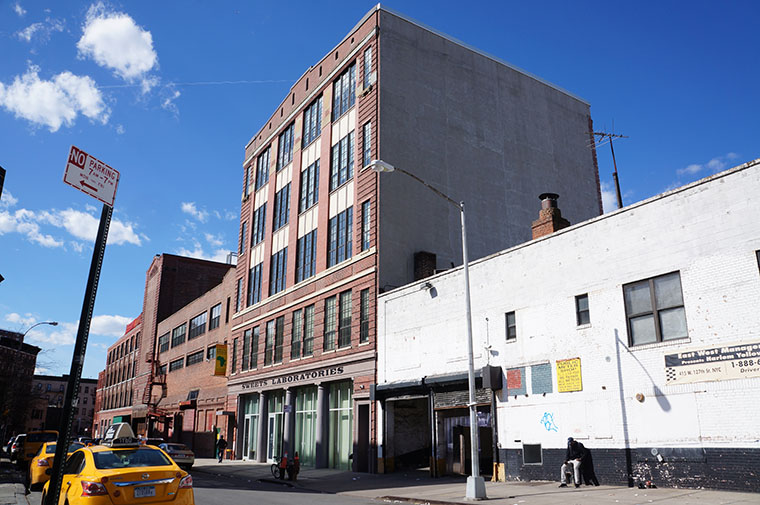
“We have a very healthy community-minded relationship,” said Kofi Boateng, West Harlem Development Corporation’s executive director. “[Scott] comes to me when he has ideas about how we could maybe work together to move the community forward and empower the residents.”
Boateng added that Metzner is “fair, attentive, always open to talk and listen. Couldn’t get a better landlord.”
He explained that Janus gives rent-free space to tenant activist group PALANTE (People Against Landlord Abuse and Tenant Exploitation) Harlem at 470 West 126th Street and to SoHarlem, a nonprofit that trains people to sew garments and home decor on the third floor of the Mink Building.
The Mink Building’s third floor also hosts Chromation and Lumiode, two small tech companies working on innovative visual technologies.
Asking rents in the complex range from the low $40s to low $60s per square foot, but tenants can secure city and state tax credits that would halve those numbers. Janus is trying to secure its first ground-floor retail tenant and envisions more shops and restaurants down the line. The aim, of course, is to enliven an area that remains pretty dead at street level, particularly on the weekends when office tenants aren’t around.
Maintaining a mix of market-rate tenants and community groups paying discounted rents is important to Metzner, who takes his role in the area’s economic development seriously. “What we’re doing right now really no one else is doing,” he said. “We’re trying to respect the community. I’m not Mother Theresa. But a store paying full market rent might subsidize 10 low-income tenants. I might have a market-rate tenant that allows me to give an activist organization and artists free rent.”
It’s clear that he has a soft spot for artists. For the past decade, he’s offered free space in his buildings to Chashama, a nonprofit run by Anita Durst (the eldest daughter of Douglas Durst) that coordinates affordable studios and exhibition space for artists across the city. Landlords give space to the organization rent-free, on a month-to-month basis, on the condition that the artists pay utilities and clear out when the landlord decides to move in a paying tenant or renovate.
Chashama rented a dozen studio spaces to artists for 50 cents to a dollar a square foot at 461 West 126th Street, now called the Malt House, for about seven years. While Metzner said he has a great relationship with the organization, he sparked some controversy in November 2015 when he asked the artists to move out. A few frustrated artists spoke to DNAinfo, but Durst argued the article mischaracterized the situation.
“Our artists understand that the space is a gift, that our time there is a gift,” Durst explained. “We’re clear from the beginning that it’s temporary, and that’s why their rents are so cheap. They made gifts for him; they were so appreciative of the time they were there. It was a beautiful community.”
Metzner wanted to make sure they only worked with local artists, Durst said, so Chashama only rented the studios to artists who lived above 96th Street or in the Bronx. “Scott was very concerned about keeping the community involved, not transplanting artists from outside.”
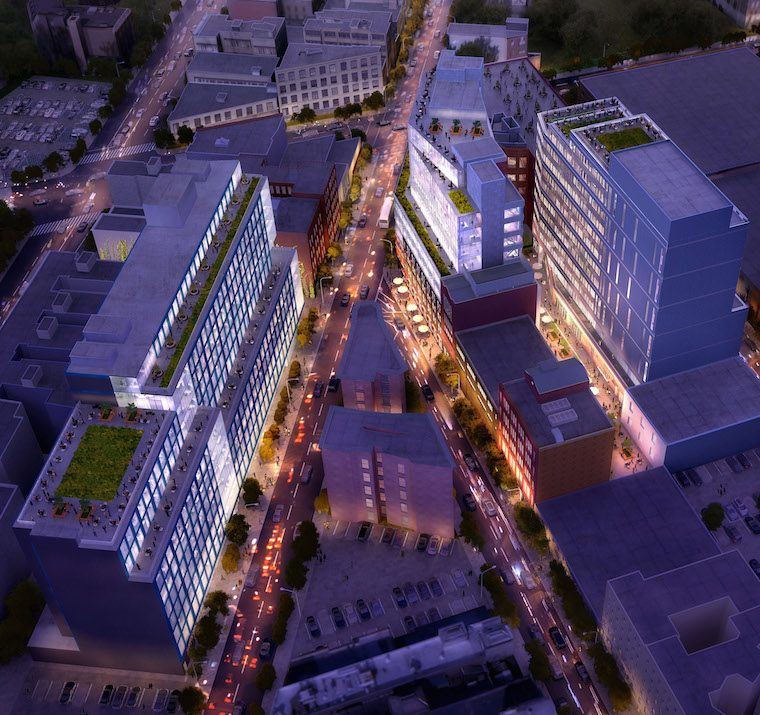
Even though they left the Malt House, the arts group still runs an exhibition space on the ground floor of 1351 Amsterdam Avenue.
Over its 22-year history, Chashama has worked with dozens of landlords across the five boroughs and secured more than 100 studio and exhibition spaces. Metzner was “absolutely one of the most easy going and forward thinking land owners that we worked with,” according to Durst. He was understanding and even-tempered when the group made mistakes, like when it washed the top two floors and water leaked down to the third floor.
Independently of Chashama, Janus has given free space to several other artists, including Argentine video artist Mika Rottenberg, Iranian mixed media artist Laleh Khorramian and Colombian sculptor Miguel Cardenas. “I call him the Medici of Harlem,” said Salama, Metzner’s partner. “He’s interested in arts and culture, and people come to him with all these ideas.”
Coincidentally, the Chashama artists moved out to make way for a gallery paying market-rate rents. Longtime Downtown art dealer Gavin Brown is moving his gallery, Gavin Brown’s Enterprise, from Greenwich Street in the West Village to three floors in the Malt House.
On a personal level, Durst called Metzner “one of the most generous and thoughtful human beings I know.” Salama described him as a dedicated father of two sons, 16 and 19, always willing to attend their basketball games during the week and come in on the weekends to try and finish up the work he missed.
Metzner wasn’t always a developer: The Albany, N.Y., native went to architecture school at the University of Maryland and got an MBA at Columbia University. Before he got into redeveloping city-owned buildings, he worked in real estate finance at Eastdil Realty (now Eastdil Secured) and Daiwa Securities and did a stint at Roseland Property Company.
His first foray into residential development was through the city’s Vacant Building program, which awarded him the contract to renovate a collection of abandoned, city-owned properties in central Harlem into affordable housing in the late 1980s. He and Salama have done several similar projects in Harlem since then. In 2004, they completed the rehab of 13 empty tenements between West 111th Street, West 116th Street, Adam Clayton Powell and Malcolm X Boulevards into low- and moderate-income housing. As part of that project, the pair constructed a new below-market, 41-unit rental building at 132 West 112th Street, which it combined with a renovated formerly vacant building next door.
However, the road to creating the Manhattanville Factory District was long. “It was impossible to get brokers or financing” when the Janus principals began acquiring the industrial buildings in the late 1990s, Salama said. “It was blood, sweat and tears to get it to what you see now.”
To buy the Mink Building—which had formerly been three separate factories—Metzner tracked down the owners in Canada. Then he convinced the owner of the building next door, who sold refrigerator parts, to sell.
After the duo went into business together in 1998, they set up an office in the basement of Metzner’s affordable housing project on West 126th Street. The pair ended up putting Metzner’s finance knowledge to work by starting what he and Salama call “the first socially responsible institutional equity fund” that didn’t rely on government subsidy and was eligible for Community Reinvestment Act credit. Eventually they moved across the street to the Sweets Building, which they purchased through the equity fund for $5.8 million in 2007. The final piece of their office neighborhood came together in 2011, when the city’s Economic Development Corporation awarded them the contract for the decrepit former Taystee Bakery complex at 450 West 126th Street.
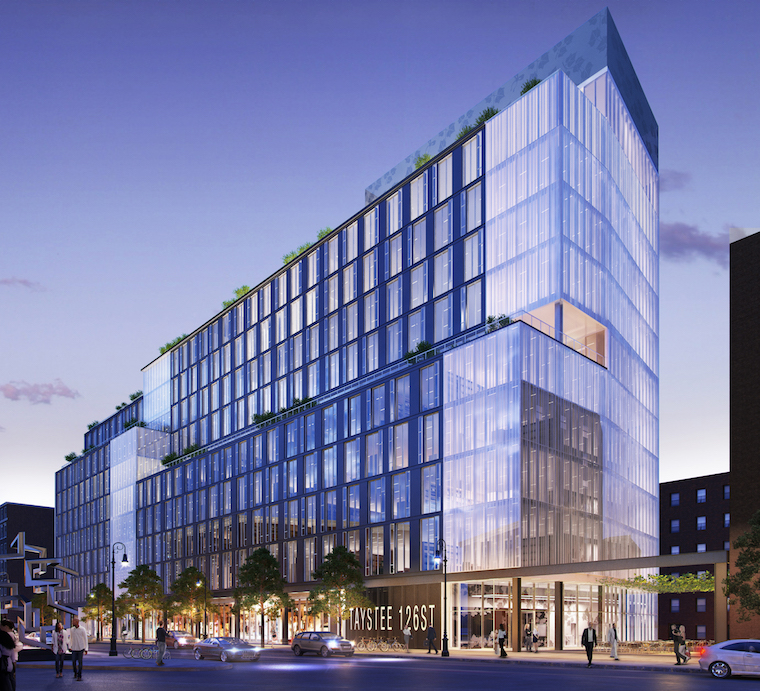
The Taystee buildings had been rotting and abandoned for more than 30 years, but Metzner and Salama believed they could save them, just like they had revamped the other forgotten factories on the block. But the city had other plans. The New York City Department of Buildings declared Taystee structurally unsound and issued vacate and demolition orders. Three years after they purchased the site, the pair was forced to knock down the motley group of turn-of-the-century buildings. In place of the old bakery, Janus is getting ready to break ground on a new 11-story, 350,000-square-foot development with a mix of office, community facility and retail space. Its plan involves creating interconnecting public spaces that allow people to cut through the complex mid-block and offer landscaped sitting areas.
The expansion of the Malt House across the street is possibly a more ambitious project. The historic four- and five-story warehouses are getting a six-story glass extension, roof decks and a new outdoor courtyard lined with retail. In order to add 80,000 square feet to the old buildings, the developers are essentially inserting a new steel structure inside the old one.
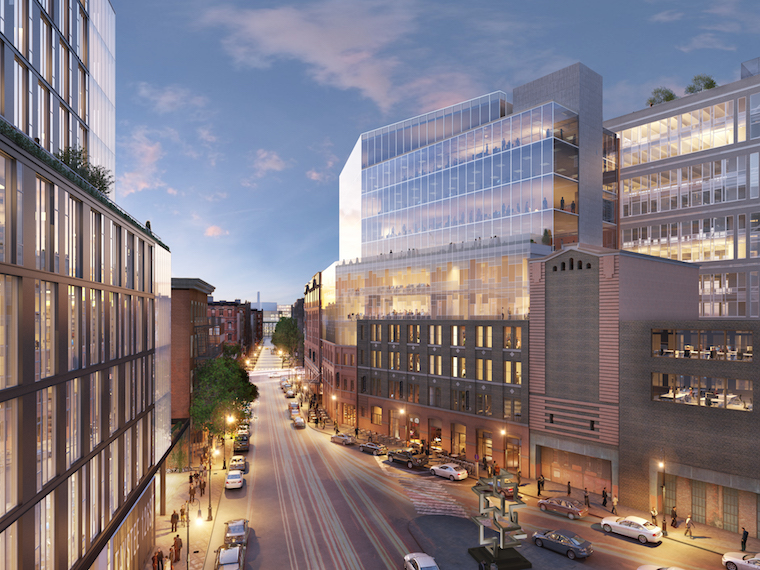
“We literally had to lift the entire building up, put in an entire new structure below and bring this structure up through the existing buildings,” Metzner explained. Meanwhile, they’re preserving the existing façade and cast-iron columns.
When construction is complete in 2019, Metzner said he hopes the Manhattanville Factory District will span 1.1 million square feet.
“It has been a privilege to be doing this,” he said. “Twenty-five years ago I could not have imagined I would be doing this sort of thing. I feel extremely lucky to be part of this community and doing what I show up here to do every day.”


